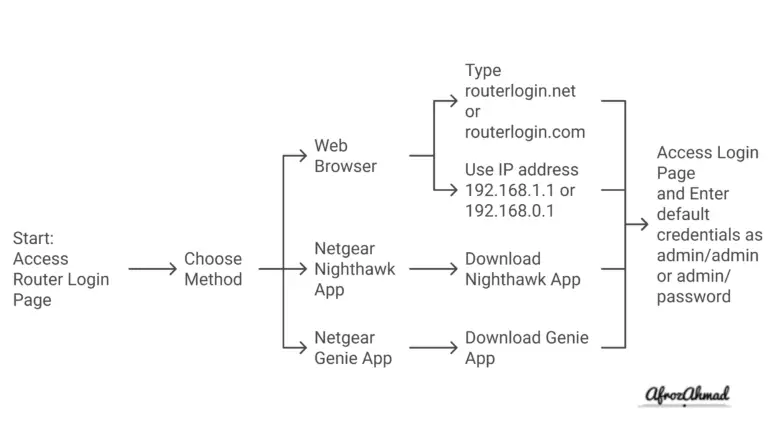In the digital age, seamless internet connectivity is a must-have, and optimizing your wifi channel width can significantly enhance your Wi-Fi network’s performance. Whether it’s 20MHz for minimizing interference in crowded 2.4GHz bands or wider 40MHz and 80MHz channels for boosting speeds in the 5GHz range, choosing the right wifi channel width is the key.
This guide will delve into why channel width matters, how to check yours, and tips for choosing the best width for your needs.
What Is Wi-Fi Channel Width and Why Does It Matter?
To understand channel width, we first need to explore the basics of Wi-Fi channels. Wi-Fi networks operate on specific radio frequency bands that are divided into smaller subsections called channels. Common Wi-Fi frequency bands include:
- 2.4GHz – Broader coverage, more devices, but higher interference
- 5GHz – Faster speeds, less interference, shorter range
- 6GHz – Newest band with ultra-fast speeds (Wi-Fi 6E)
Wi-Fi channels essentially act as different “lanes” for data to flow on. Each channel utilizes a specific central frequency and fixed amount of bandwidth capacity.
Channel width refers to the size of the frequency range or “pipe” allotted to each channel. Wider channel widths allow more data to be transmitted at once. Think of it like adding more lanes to a highway.
Configuring appropriate channel widths is crucial because it directly impacts connectivity speeds and overall network performance. However, there are also trade-offs to consider in terms of device compatibility and interference from nearby networks.
See also: 2.4 GHz vs 5 GHz WiFi Bands
How to Check Your WiFi Channel Width
Now that you understand the importance of configuring the right channel width for your wireless network, you likely want to check what yours is currently set to. Here are two easy ways to view and confirm your Wi-Fi’s channel width selection.
Check Your Router Settings
Most wireless routers provide administrative access to view and adjust channel settings through a web interface:
- Access by browsing to the router’s IP address (commonly 192.168.1.1 or 192.168.0.1)
- Login with admin credentials (username/password)
- If unsure, try default admin/admin or admin/password combos
- Look for Wireless, WLAN, Band or Radio category in menu
- Select 2.4GHz or 5GHz wireless bands
- May be listed separately or under a “Dual-Band Settings” section
- View the “Channel Width” or similarly labeled setting
- Common options: 20MHz, 20/40MHz, 40MHz, 20/40/80MHz etc.
- 20/40/80MHz enables auto channel width
For example, popular router brands like Netgear, Linksys, TP-Link etc. all provide wireless channel/width info under “Wireless Settings” or “Basic WiFi Settings”. If unsure where to find it in your router’s UI, checking its user manual should guide you.
Use WiFi Analyzer Software
Alternatively, you can use free WiFi analysis tools/apps to scan networks in your environment. They provide channel width details for all detected networks, including your own. Useful options include:
- Ekahau HeatMapper – Free Windows/macOS WiFi analysis tool
- WiFiAnalyzer (Open-source) – Android smartphone WiFi scanning app
- inSSIDer – Free WiFi scanner for Windows and macOS
- WifiInfoView – Scans and displays WiFi channels for Windows networks
These utilities let you identify all nearby Wi-Fi networks by name, band, channel, speeds etc. Your own SSID will be highlighted with additional details like Wi-Fi mode (802.11n/ac/ax) and configured channel width shown. This presents an easy way to check channel width without logging into your router directly.
So try using your router’s admin console, or leverage analyzer software to easily validate what channel width is currently set for your 2.4GHz and 5GHz Wi-Fi networks. This info then helps better optimize configurations for performance.
Wi-Fi Channels and Frequency Bands Explained
Let’s take a deeper look at the common Wi-Fi frequency bands and how channel width works within them:
The 2.4GHz Wi-Fi Band
- Covers 2400-2483MHz frequency range
- Divided into 11 usable channels (1-11) spaced 5MHz apart
- All channels are 20MHz wide by default
- Only channels 1, 6 and 11 do not overlap
- Using overlapping channels causes interference
- Supports 802.11b/g/n Wi-Fi devices
- Provides wider coverage range but slower maximum speeds
- More likely to experience interference from other devices like cordless phones, microwaves etc. that use 2.4GHz frequency
The 2.4GHz band is extremely crowded, so using the narrowest 20MHz channel width is strongly advised. Widening channels here will only worsen interference issues and degrade performance.
The 5GHz Wi-Fi Band
- Covers 5150-5850MHz frequency spectrum
- Has a wider pool of up to 25 usable channels depending on region
- Channels are all 20MHz wide by default
- Supports channel bonding to create 40, 80 or even 160MHz “wide” channels
- Bonds together adjacent 20MHz channels
- Enables faster maximum connection speeds up to 1-2Gbps (Wi-Fi 5/6)
- More resilient to interference but slightly shorter coverage range
The 5GHz band has far more available channels, so judiciously using wider channel widths can boost throughput here. However, it requires carefully weighing factors like interference and device compatibility.
The New 6GHz Wi-Fi Band
- Recently opened 5900-7125MHz spectrum with Wi-Fi 6E standard
- Adds up to 14 more 80MHz-wide channels in US/Canada
- Enables super fast maximum speeds above 2Gbps
- Least interference and best capacity for dense, high-bandwidth uses
- But client device support still limited as of 2024
The vast open space in 6GHz will allow for wide 80MHz channel widths to become mainstream. But device support is still nascent, so most networks today focus on optimizing existing 2.4/5GHz bands.
Recommended Wi-Fi Channel Widths
Determining ideal channel widths requires understanding your specific environment constraints and device capabilities. However, general guidelines based on each frequency band are:
2.4GHz Channels
- Use 20MHz width only
- Provides 3 non-overlapping channels – 1, 6, 11
- Avoid any channel bonding/widening
- Ensures broadest compatibility and reduces interference
- Fine for moderate bandwidth uses like web browsing, emails etc.
5GHz Channels
- Use 20MHz width where interference is very high
- Up to 8 non-overlapping 20MHz channels
- Or use 40MHz width for a balance of speed/interference
- Still enables 4 non-overlapping 40MHZ channels
- Consider 80MHz width only for very high bandwidth applications like video streaming or gaming
- If you can ensure low interference and all client devices support it
- Avoid mixing 40/80MHz on same network
6GHz Channels
- Use new 80MHz default width for Wi-Fi 6E
- Most regions allowing ~500-1200MHz spectrum for Wi-Fi 6E
- Provides fast multi-Gbps speeds with minimal interference
- But ensure your specific devices have 6GHz/Wi-Fi 6E compatibility first
Getting the right balance here is key. The wider you go, the more speed you can get – but at the risk of worse interference and compatibility issues if you go too wide.
Special Considerations for DFS Channels
One extra factor to note with 5GHz channels is DFS – Dynamic Frequency Selection. DFS relates to certain 5GHz channels requiring radar detection and automated avoidance. DFS avoids interference but comes with some special caveats:
- DFS channels incur a performance hit from more passive client scanning
- Some client devices don’t support DFS channels at all
- DFS channel radar avoidance can cause temporary channel switching
So mainly stick to non-DFS channels where possible, and ensure your devices support any DFS channels you plan to use.
Wi-Fi 6E and Regional 6GHz Spectrum Differences
It’s also important to recognize major regional variations in newly opened 6GHz spectrum channels:
- USA: Up to 1200MHz spectrum unlocked in 6GHz
- Enables super-wide 160MHz channels
- EU/UK: About 500MHz spectrum in 6GHz
- Limits maximum width to 80MHz
- So what you can/should deploy differs across regions
These differences will impact planning as the new 6GHz space gets adopted over next 2-3 years.
Best Practices for Channel Planning
Here are some key best practices to ensure optimal Wi-Fi performance through careful channel planning:
Stick to 20MHz-Only in 2.4GHz
By avoiding any channel bonding on the crowded 2.4GHz channels, you maximize compatibility and minimize interference issues.
Enable Auto Channel Width Selection in 5GHz
Let your router dynamically adjust between 20/40/80MHz in 5GHz based on real-time conditions – maximizes throughput flexibility.
Choose Non-Overlapping Channels
Carefully select channels that don’t overlap with neighboring Wi-Fi networks whenever possible. Overlapping channels create signal contention.
Check Client Device Compatibility
Some older client devices may only work on 20MHz networks – so enable lower backwards compatible channel widths.
Optimize Band Steering Settings
Use band steering to push dual band client devices to 5GHz for higher performance – avoiding overcrowded 2.4GHz.
Conclusion
There are always trade-offs to consider between speed, interference mitigation and compatibility when configuring Wi-Fi channels and widths. The best settings depend on your specific environment, devices and applications. But armed with the basics above, you can intelligently evaluate and optimize your wireless network’s channel plan for maximum performance and stability.
- Epson EpiqVision Flex CO-W01 Projector Review - February 21, 2025
- How to Log in to Your Netgear Router - January 17, 2025
- Gaimoo GM200 Mini Projector Review - January 12, 2025



